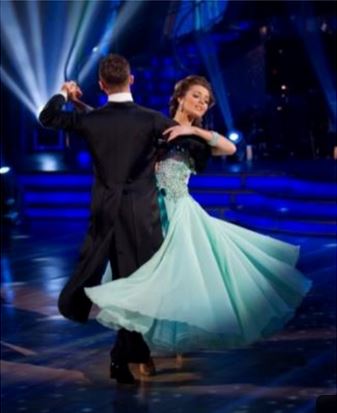Seen in Tallahassee in the early 1800s
No dance in our recent centuries not the Charleston, the Lindy, jitterbugging to Rock and Roll music, the Lambada, or even twerking, has aroused the passionate moral disapproval generated by the waltz. In its first introduction in England in the early years of the 19th century, the waltz was considered so vulgar and indelicate, that even the mad, bad Lord Byron disapproved.
Mme Celnart of The Gentleman and Ladies Book, 1833 put it succinctly: “The waltz is a dance of quite too loose a character, and unmarried ladies should refrain from it altogether. Both in public and in private. Young married ladies, however, may be allowed to waltz if it is very seldom and with persons of their acquaintance.” The waltz’s effects were seen to be most deleterious to young women who were at the greatest physical risk from the whirling excitement of the waltz “There is something in the close approximation of persons, in the attitudes, and in the motion that ill agrees with the delicacy of women.” (The Mirror of the Graces 1813)
Vertigo is one of the great inconveniences of the waltz and the character of this dance, its rapid turning, the clasping of the dancers, their exciting contact, and the too quick and too long
successions of agreeable emotions, produce sometimes in women of irritable constitution, “syncopes, or fainting spells, spasms, and other accidents which should induce them to renounce it” (Donald Walker, “Exercises for Ladies” 1836)
The first English language dance manual to teach the waltz was Thomas Wilson, 1816, A description of the correct method of WALTZING the truly fashionable species of DANCING, that from the graceful pleasing Beauty of Movements has obtained an ascendency over every other department of that polite branch of Education. Thomas Wilson, dancing master of the King Theater Opera House, London.
The form of almost all the dance manuals I have looked at from the 19th century consists of half the book as an etiquette book setting out rules for acceptance into a polite society, a necessity for upward mobility, and the other half dance instruction. Mastering the rules for polite behavior and the ability to dance were a necessity for social mobility, the battlefield was a ball, or assembly.
When Jane Austin’s Mr. Darcy meets Miss Elizabeth Bennet at a dance, they existed in a class system based on hereditary aristocracy; In America, it was the absence of such a system that gave rise to an intense appetite for books to teach the rules for proper behavior in every sphere of life from kitchen to ballroom. In Europe, this format of dance/etiquette manuals had supplemented face to face personal instruction for centuries, but in nineteenth century America there were very few, actually, outside the biggest cities, almost no, dancing masters. As Elizabeth Aldrich author of From Ballroom to Hell: grace and folly in nineteenth century dance writes The 19th century ballroom was the perfect setting in which ladies and gentlemen, attired in the latest fashions could exercise their considerable dancing abilities and more importantly demonstrate mastery of polite behavior which was required for acceptance into
genteel society.
How did Americans to learn to dance and behave in the ballroom and assemblies where social interaction was on display? Dance Manuals. There were hundreds of dance/etiquette manuals published in the US during the 19th century. The Library of Congress American Ballroom Companion makes available more than 400 years of dance manuals.
But in Florida…
According to our own Dr Wiley Housewright of FSU in his highly respected book History of Music and Dance in Florida 1565-1865, “The waltz, not then accepted in northern states became the favorite dance in both Pensacola and Tallahassee in the second and third decade of the nineteenth century.” The waltz probably came to Florida in the very early 1820s.
Goethe: “Never have I been so light on my feet. I was no longer human. I held in my arms the most lovable creature, and flying about with her like lightning, so that everything about me faded away.
Wagner: Waltz is more intoxicating than alcohol.
Idy Codington
MA American Dance Studies, FSU
Tallahassee, FL

